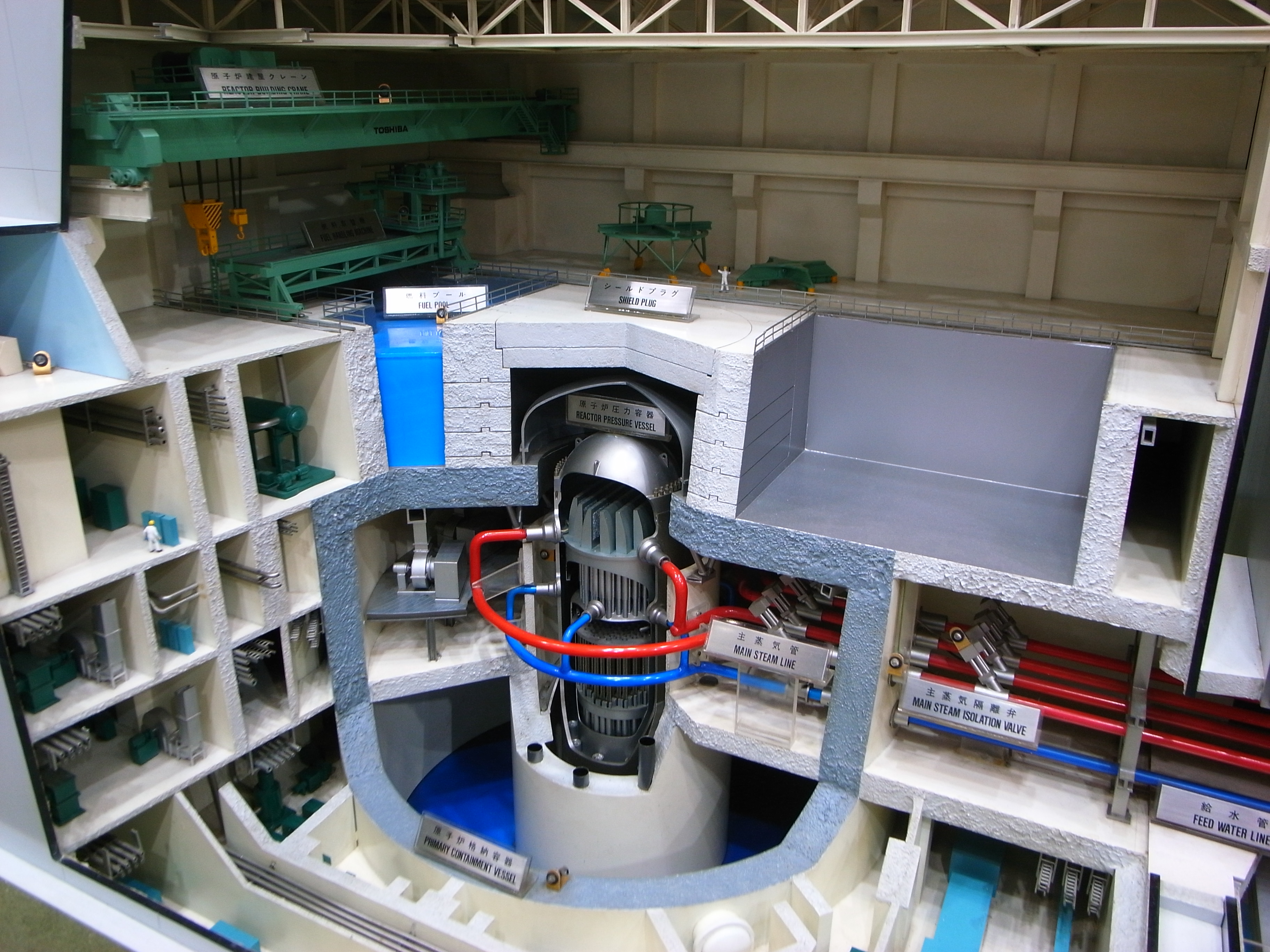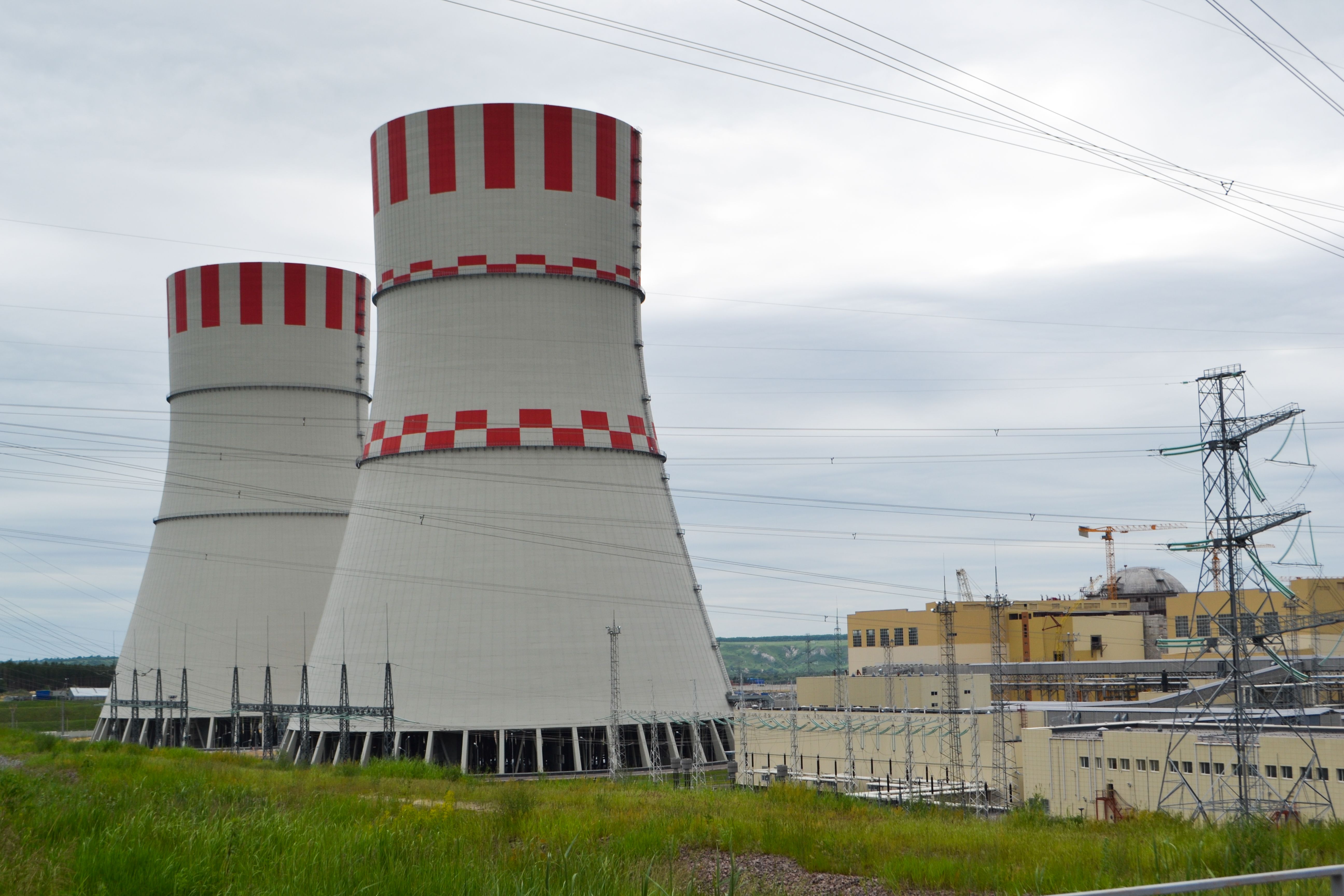|
VVER-1000
The water-water energetic reactor (WWER), or VVER (from russian: водо-водяной энергетический реактор; transliterates as ; ''water-water power reactor'') is a series of pressurized water reactor designs originally developed in the Soviet Union, and now Russia, by OKB Gidropress. The idea of such a reactor was proposed at the Kurchatov Institute by Savely Moiseevich Feinberg. VVER were originally developed before the 1970s, and have been continually updated. As a result, the name VVER is associated with a wide variety of reactor designs spanning from generation I reactors to modern generation III+ reactor designs. Power output ranges from 70 to 1300 MWe, with designs of up to 1700 MWe in development. The first prototype VVER-210 was built at the Novovoronezh Nuclear Power Plant. VVER power stations have mostly been installed in Russia and the former Soviet Union, but also in China, the Czech Republic, Finland, Germany, Hungary, Slovakia, Bulgaria, Indi ... [...More Info...] [...Related Items...] OR: [Wikipedia] [Google] [Baidu] |
Balakovo Nuclear Power Plant
Balakovo nuclear power station (russian: Балаковская АЭС, Balakovskaya AES []) is located in the city of Balakovo, Saratov Oblast, Russia, about south-east of Moscow. It consists of four operational reactors; a fifth unit is still under construction. Owner and operator of the nuclear power station is Rosenergoatom. Balakovo NPP participates in a twinning program between nuclear power stations in Europe and Russia; since 1990 it has been in partnership with Biblis Nuclear Power Plant. Reactor data The Balakovo Nuclear Power Plant has four operating units: In 2018 Rosatom announced it had developed a thermal annealing technique for reactor pressure vessels which ameliorates radiation damage and extends service life by between 15 and 30 years. This had been demonstrated on unit 1. Gallery File:BalNPP m st.jpg, Interior View File:BalNPP m st2.jpg, Steam Turbine Maintenance File:BalNPPcons2.jpg, Reactor under Construction File:BalakovoNPP bv.jpg, Aerial View File ... [...More Info...] [...Related Items...] OR: [Wikipedia] [Google] [Baidu] |
Novovoronezh Nuclear Power Plant
__NOTOC__ The Novovoronezh nuclear power station (russian: Нововоронежская АЭС []) is a nuclear power station close to Novovoronezh in Voronezh Oblast, central Russia. The power station was vital to the development of the VVER design: every unit built was essentially a prototype of its design. On this site is built the Novovoronezh Nuclear Power Plant II. History In 2002 Novovoronezh-3 was modernised and life extended, including new safety systems. In 2010 Novovoronezh-5 was shut down for modernization to extend its operating life for an additional 25 years, the first VVER-1000 to undergo such an operating life extension. The works include the modernization of management, protection and emergency systems, and improvement of security and radiation safety systems. As of 2018 unit 4 is undergoing modernisation work for a 15-year life extension, taking its operational life to 60 years. This involved annealing its reactor pressure vessel and using parts from the rece ... [...More Info...] [...Related Items...] OR: [Wikipedia] [Google] [Baidu] |
Generation III+ Reactor
Generation III reactors, or Gen III reactors, are a class of nuclear reactors designed to succeed Generation II reactors, incorporating evolutionary improvements in design. These include improved fuel technology, higher thermal efficiency, significantly enhanced safety systems (including passive nuclear safety), and standardized designs intended to reduce maintenance and capital costs. They are promoted by the Generation IV International Forum (GIF). The first Generation III reactors to begin operation were Kashiwazaki 6 and 7 advanced boiling water reactors (ABWRs) in 1996 and 1997. Since 2012, both have been shut down due to security concerns. Due to the prolonged period of stagnation in the construction of new reactors and the continued (albeit declining) popularity of Generation II/II+ designs in new construction, relatively few third generation reactors have been built. Overview The older Gen II reactors comprise the vast majority of current nuclear reactors. Gen III rea ... [...More Info...] [...Related Items...] OR: [Wikipedia] [Google] [Baidu] |
Generation III Reactor
Generation III reactors, or Gen III reactors, are a class of nuclear reactors designed to succeed Generation II reactors, incorporating evolutionary improvements in design. These include improved fuel technology, higher thermal efficiency, significantly enhanced safety systems (including passive nuclear safety), and standardized designs intended to reduce maintenance and capital costs. They are promoted by the Generation IV International Forum (GIF). The first Generation III reactors to begin operation were Kashiwazaki 6 and 7 advanced boiling water reactors (ABWRs) in 1996 and 1997. Since 2012, both have been shut down due to security concerns. Due to the prolonged period of stagnation in the construction of new reactors and the continued (albeit declining) popularity of Generation II/II+ designs in new construction, relatively few third generation reactors have been built. Overview The older Gen II reactors comprise the vast majority of current nuclear reactors. Gen III re ... [...More Info...] [...Related Items...] OR: [Wikipedia] [Google] [Baidu] |
Generation III Reactor
Generation III reactors, or Gen III reactors, are a class of nuclear reactors designed to succeed Generation II reactors, incorporating evolutionary improvements in design. These include improved fuel technology, higher thermal efficiency, significantly enhanced safety systems (including passive nuclear safety), and standardized designs intended to reduce maintenance and capital costs. They are promoted by the Generation IV International Forum (GIF). The first Generation III reactors to begin operation were Kashiwazaki 6 and 7 advanced boiling water reactors (ABWRs) in 1996 and 1997. Since 2012, both have been shut down due to security concerns. Due to the prolonged period of stagnation in the construction of new reactors and the continued (albeit declining) popularity of Generation II/II+ designs in new construction, relatively few third generation reactors have been built. Overview The older Gen II reactors comprise the vast majority of current nuclear reactors. Gen III re ... [...More Info...] [...Related Items...] OR: [Wikipedia] [Google] [Baidu] |
Generation III+ Reactor
Generation III reactors, or Gen III reactors, are a class of nuclear reactors designed to succeed Generation II reactors, incorporating evolutionary improvements in design. These include improved fuel technology, higher thermal efficiency, significantly enhanced safety systems (including passive nuclear safety), and standardized designs intended to reduce maintenance and capital costs. They are promoted by the Generation IV International Forum (GIF). The first Generation III reactors to begin operation were Kashiwazaki 6 and 7 advanced boiling water reactors (ABWRs) in 1996 and 1997. Since 2012, both have been shut down due to security concerns. Due to the prolonged period of stagnation in the construction of new reactors and the continued (albeit declining) popularity of Generation II/II+ designs in new construction, relatively few third generation reactors have been built. Overview The older Gen II reactors comprise the vast majority of current nuclear reactors. Gen III rea ... [...More Info...] [...Related Items...] OR: [Wikipedia] [Google] [Baidu] |
Light-water Reactor
The light-water reactor (LWR) is a type of thermal-neutron reactor that uses normal water, as opposed to heavy water, as both its coolant and neutron moderator; furthermore a solid form of fissile elements is used as fuel. Thermal-neutron reactors are the most common type of nuclear reactor, and light-water reactors are the most common type of thermal-neutron reactor. There are three varieties of light-water reactors: the pressurized water reactor (PWR), the boiling water reactor (BWR), and (most designs of) the supercritical water reactor (SCWR). History Early concepts and experiments After the discoveries of fission, moderation and of the theoretical possibility of a nuclear chain reaction, early experimental results rapidly showed that natural uranium could only undergo a sustained chain reaction using graphite or heavy water as a moderator. While the world's first reactors ( CP-1, X10 etc.) were successfully reaching criticality, uranium enrichment began to develop from ... [...More Info...] [...Related Items...] OR: [Wikipedia] [Google] [Baidu] |
Pressurised Water Reactor
A pressurized water reactor (PWR) is a type of light-water nuclear reactor. PWRs constitute the large majority of the world's nuclear power plants (with notable exceptions being the UK, Japan and Canada). In a PWR, the primary coolant (water) is pumped under high pressure to the reactor core where it is heated by the energy released by the fission of atoms. The heated, high pressure water then flows to a steam generator, where it transfers its thermal energy to lower pressure water of a secondary system where steam is generated. The steam then drives turbines, which spin an electric generator. In contrast to a boiling water reactor (BWR), pressure in the primary coolant loop prevents the water from boiling within the reactor. All light-water reactors use ordinary water as both coolant and neutron moderator. Most use anywhere from two to four vertically mounted steam generators; VVER reactors use horizontal steam generators. PWRs were originally designed to serve as nuclear marine ... [...More Info...] [...Related Items...] OR: [Wikipedia] [Google] [Baidu] |
Coolant
A coolant is a substance, typically liquid, that is used to reduce or regulate the temperature of a system. An ideal coolant has high thermal capacity, low viscosity, is low-cost, non-toxic, chemically inert and neither causes nor promotes corrosion of the cooling system. Some applications also require the coolant to be an electrical insulator. While the term "coolant" is commonly used in automotive and HVAC applications, in industrial processing heat-transfer fluid is one technical term more often used in high temperature as well as low-temperature manufacturing applications. The term also covers cutting fluids. Industrial cutting fluid has broadly been classified as water-soluble coolant and neat cutting fluid. Water-soluble coolant is oil in water emulsion. It has varying oil content from nil oil (synthetic coolant). This coolant can either keep its phase and stay liquid or gaseous, or can undergo a phase transition, with the latent heat adding to the cooling efficiency. The lat ... [...More Info...] [...Related Items...] OR: [Wikipedia] [Google] [Baidu] |
Mochovce 2005-01-19 1
Mochovce ( hu, Mohi) is a former village in western Slovakia, best known for its nuclear power plant. It is situated in Nitra Region, northwest of Levice. The village inhabitants were relocated and the village was destroyed to make place for the power plant. A late baroque church and a cemetery are the only remaining structures. In contrast, the power plant construction has brought an economic and demographic boom Boom may refer to: Objects * Boom (containment), a temporary floating barrier used to contain an oil spill * Boom (navigational barrier), an obstacle used to control or block marine navigation * Boom (sailing), a sailboat part * Boom (windsurfi ... to the nearby town of Levice in the 1980s. External links Official website of the power plant Former villages in Slovakia {{Nitra-geo-stub ... [...More Info...] [...Related Items...] OR: [Wikipedia] [Google] [Baidu] |
Emergency Core Cooling System
:''This article covers the technical aspects of active nuclear safety systems in the United States. For a general approach to nuclear safety, see nuclear safety.'' The three primary objectives of nuclear reactor safety systems as defined by the U.S. Nuclear Regulatory Commission are to shut down the reactor, maintain it in a shutdown condition and prevent the release of radioactive material. Reactor protection system (RPS) A reactor protection system is designed to immediately terminate the nuclear reaction. By breaking the nuclear chain reaction, the source of heat is eliminated. Other systems can then be used to remove decay heat from the core. All nuclear plants have some form of reactor protection system. Control rods Control rods are a series of rods that can be quickly inserted into the reactor core to absorb neutrons and rapidly terminate the nuclear reaction. They are typically composed of actinides, lanthanides, transition metals, and boron, in various alloys with struc ... [...More Info...] [...Related Items...] OR: [Wikipedia] [Google] [Baidu] |








